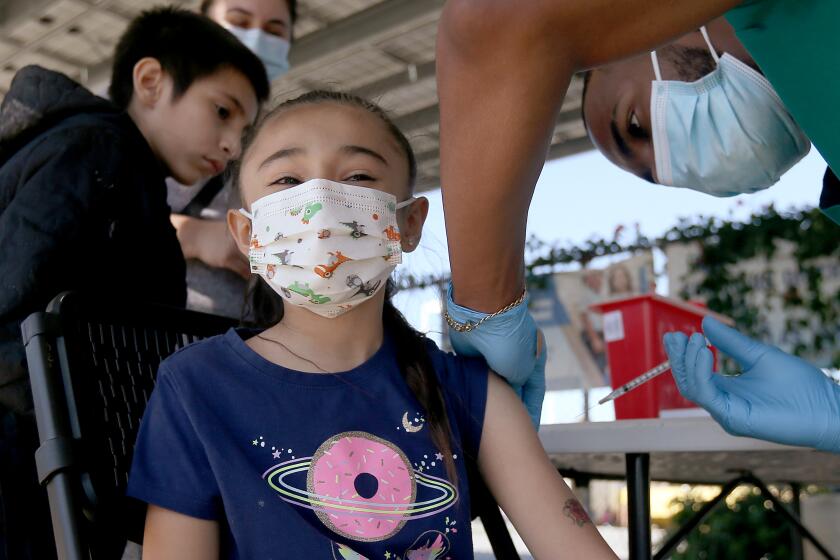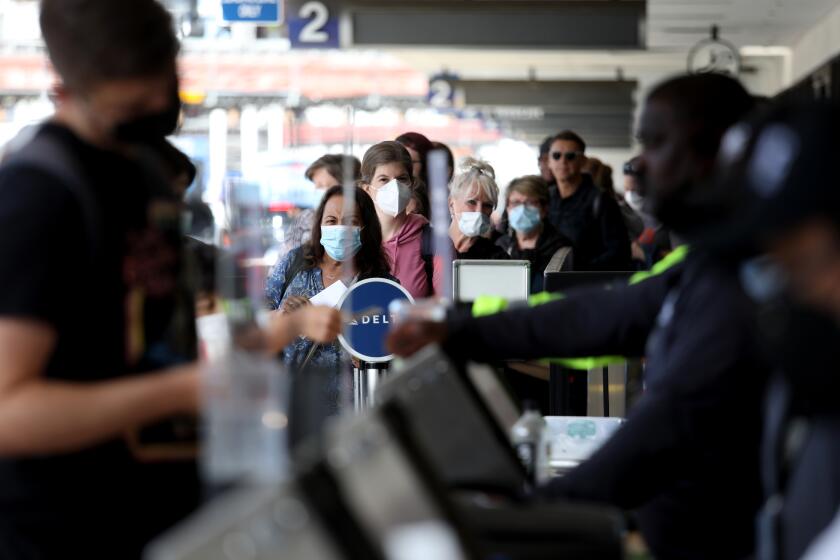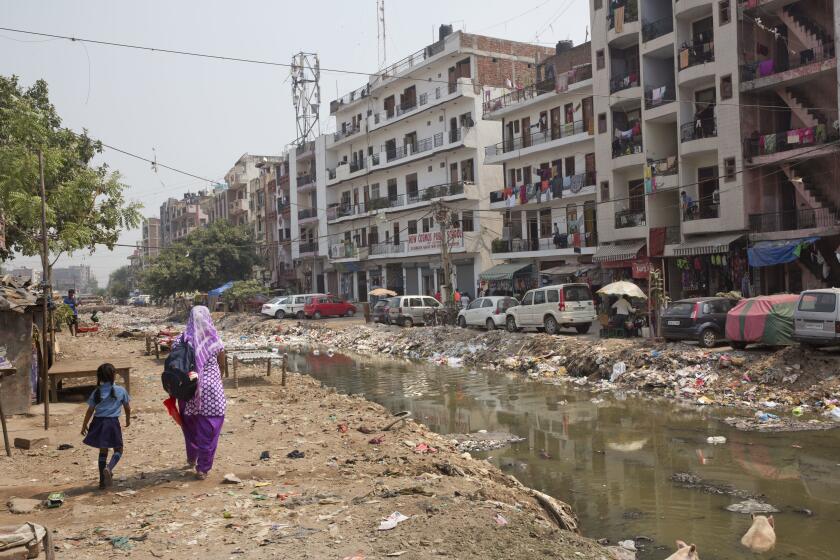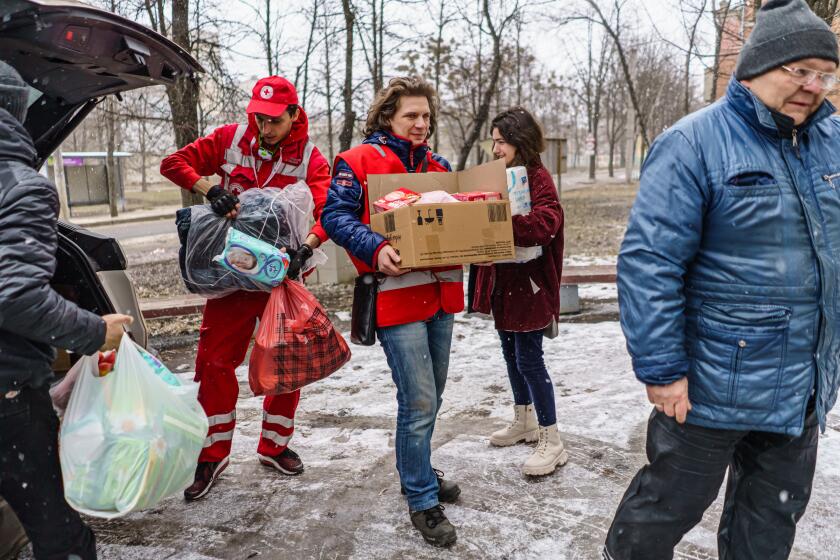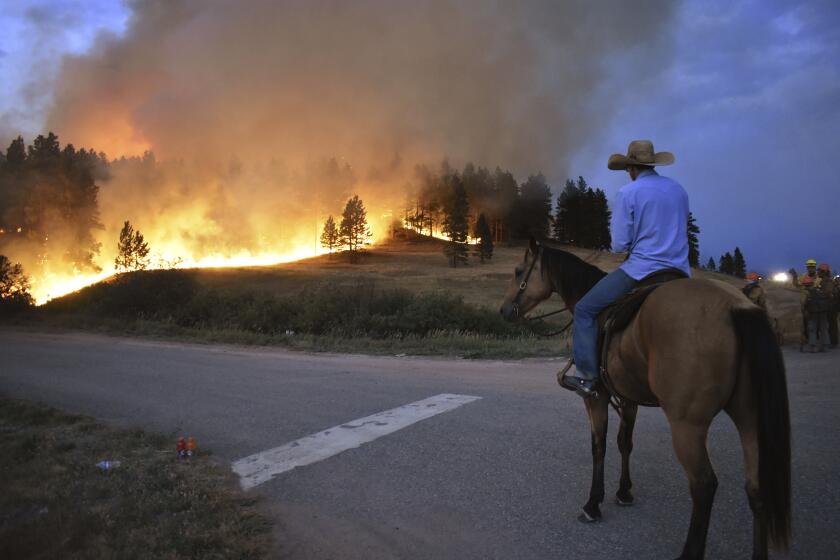Op-Ed: COVID won’t become endemic until we have a vaccine for kids under 5

- Share via
Last week, Moderna became the first manufacturer to officially ask the Food and Drug Administration to approve its COVID vaccine for children under 6 years old. One of three companies with authorized COVID-19 vaccines in the United States, Moderna made the request a month after saying its data showed efficacy for two doses given to kids. This comes a few months after the FDA delayed its review of a vaccine for young children from Pfizer, which has not yet requested authorization, until that company collects more data.
As with all things COVID, sentiments about vaccinating kids are strong and split. Millions of families with young children are counting the minutes until their infants and toddlers can get shots. Most, however, seem inclined to pass or wait — as of this January, just 31% of parents with kids under 5 in one survey said they would get their child the vaccination immediately after one was authorized.
Right now, vaccines for kids might feel unnecessary even to families initially eager for their arrival. As we’ve emerged from the Omicron winter surge, and as we muddle through the yet-to-be-understood rise of the BA.2 subvariant that’s driving up cases but not hospitalizations or deaths, an estimated 3 in 4 U.S. kids have already had COVID. While we do not yet know exactly how prior infection affects immunity from future infection, nor the risk of long COVID, data indicate at least temporary protection, at least within a given surge.
As of mid-March, only 30% of children ages 5 to 11 were fully vaccinated in Los Angeles County
But the reality is, having a vaccine available to young kids is the only way for us to even begin to get close to COVID being endemic. Infected children spread this illness to vulnerable elders, immunosuppressed playmates and, clearly, to one another. Moderna’s recent data add to the wealth of evidence showing that vaccines provide a critical layer of prevention. Until every age group has access to this protection — which also helps shield their larger communities — we’re kidding ourselves that we have a handle on COVID as a regular, predictable illness.
This is especially true because the U.S. is in a different place than even just a few months ago, mid-Omicron wave. Guidelines are scattered and random, with officials waffling as to whether we’re still in a pandemic and fighting over masking rules. Frankly, it feels like we’re in a quagmire of uncertain risk-taking and safety. Many who test positive for COVID are now doing so at home, leading to underestimated case counts. Masks are optional nearly everywhere, and schools vary in how they’re handling current case numbers. Not only are my own kids attending two different L.A. schools with two different COVID protocols, I’m hearing a similar patchwork from my patients. In a given afternoon, seeing about 20 families, I never hear the same answers about school testing and masking policies.
The two things that scream to me every day from my own experience and patients’ stories are that we are consistently inconsistent in our pandemic behavior, and that the honor code required for people to self-regulate does not work.
But what has worked, and acted as a portal to more freedom amid the pandemic, is vaccination. Even while vaccines dropped in their efficacy against Omicron, they remained effective in preventing hospitalization — including for children ages 5 to 11. As sufficiently rigorous data are presented to the FDA for younger kids, there’s no reason to delay that protection for the last remaining group of Americans who don’t have it.
By now we’ve learned playing catch-up on COVID is too little too late.
Will authorizing vaccines for our littlest humans lead us straight to coveted endemicity? Probably not, from a numbers standpoint. One of the challenges of studying COVID vaccines in the younger population is that, thankfully, young children rarely become severely ill, get hospitalized or die from infection. So to prove that a vaccine minimizes such risks in a population already at relatively low risk has been a significant challenge.
But the data are getting us there, and even if only a small percentage of young children get vaccinated, it will move us closer to overall community protection, especially in the younger set. Although millions of young children have already contracted COVID, we don’t know if they will remain as protected from future illness as they would be if immunized. Additionally, the more individuals immunized in a group — picture a preschool class of 20, or a daycare filled with 50 infants and toddlers — the less likely we will see outbreaks, closures and, importantly, any critically ill children.
Moderna said it would finish submitting the data to regulators by May 9. The FDA announced Friday that it would review vaccines for kids under 5 in June and will not wait for Pfizer to put forward its data to consider Moderna’s — as the agency previously suggested it might do — unless both companies submit full applications within a week of each other. That’s a good plan. There’s no need to delay the process.
Meanwhile, physicians should remain resolute in our message that we recommend and give vaccines to protect our patients and the public, full stop. Though distrust of doctors and the pharmaceutical industry increasingly trumps this statement, we remain a direct point of contact for patients, and we’re in a position to tell them the truth about vaccines. For kids just as for adults, even in year three of the pandemic, that truth still matters.
Nina Shapiro is director of pediatric ear, nose and throat at the Mattel Children’s Hospital and a professor of head and neck surgery at UCLA. She is the author of “The Ultimate Kids’ Guide to Being Super Healthy.”
More to Read
A cure for the common opinion
Get thought-provoking perspectives with our weekly newsletter.
You may occasionally receive promotional content from the Los Angeles Times.
